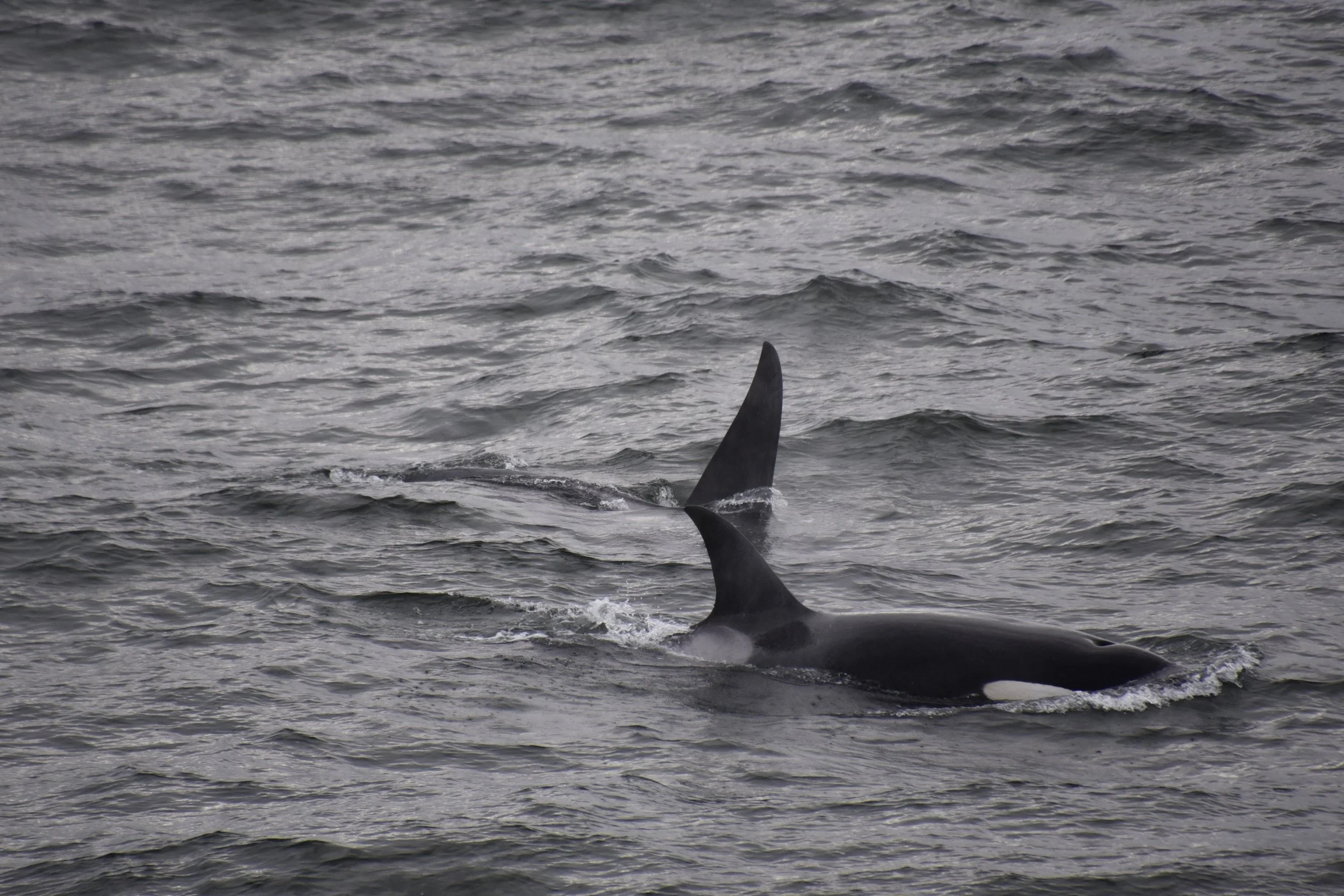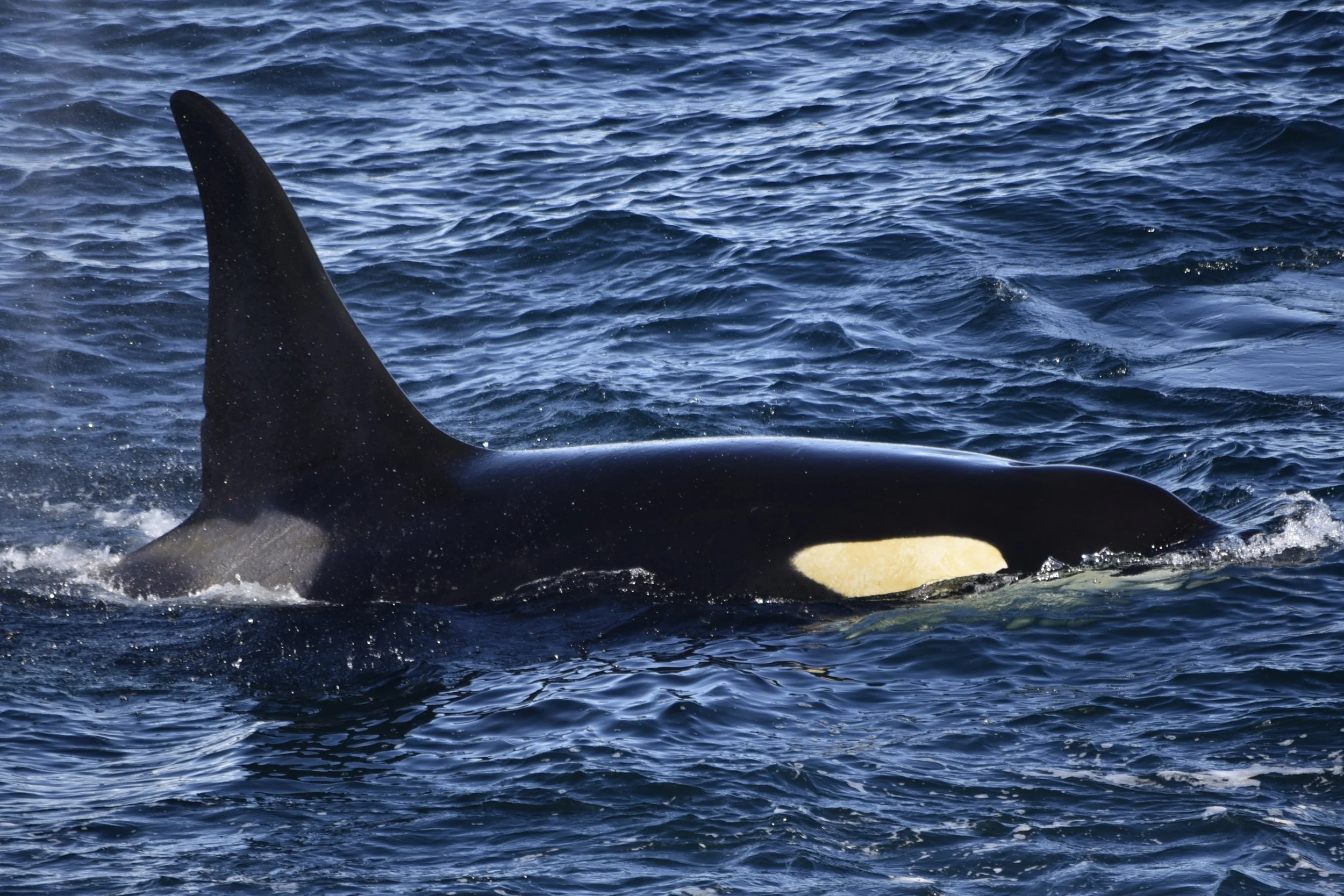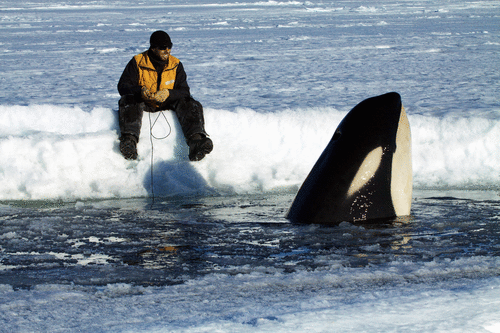All about the orca
Orca, or ‘killer whales’, are the largest dolphin species and are top marine predators found in every ocean in the world. They live in pods forming extremely strong social structures in matrilineal groups, meaning they are led by older females. The common name ‘killer whale’ can be a little misleading! Ocra are actually a type of dolphin, as they are a species of toothed whale, called ‘odontocetes’, within the wider Cetacea family which includes all dolphin and whale species. The remainder of the cetaceans are classed at ‘mysticetes’, or baleen whales, and include all other whale species which don't have teeth, like blue whales or humpback whales. Orcas were so named as they are well known for being ‘whale killers’, with young whale calves being a favoured prey item for some types of orca.
But of course, not all orca are the same! Here in the southern hemisphere, we have five different ecotypes: Type A, Type B1 (the ‘Large B1s’), Type B2 (the ‘Small B2s’), Type C and Type D. To tell the difference between the types, we mainly assess the size, eye patch, saddle patch and dorsal cape. Interestingly, we are yet to formally identify the ecotype found in Australian waters, and we therefore know very little about their movement and population dynamics.
Type A
Type As are the largest of the southern hemisphere killer whales, with females reaching 7.7m and males 9.5m in length. They have a horizontal mid-sized eye patch oriented parallel to the body axis, and do not have the dark dorsal cape.
Photo credit: Dr Kate Robb
Type B
There are two morphotypes of the Type B orca; Large B1s, also known as Pack Ice Bs, and Small B2s, also known as the Gerlache Strait Bs. The eyepatch of the Type Bs are large and oval in shape, oriented to parallel to the body axis, the eye patch is generally twice the size of Type As! They also have a distinct darker dorsal cape. Type Bs can have yellowing of the skin, which is linked to diatoms (single celled algae). Whilst all killer whales are recognised as a single species, Type B’s have been given the putative name of Orca nanus.
Photo credit: Dr Kate Robb
Type C
Type C, otherwise known as Ross Sea orca, have a bold prominent saddle, dorsal cape, and distinct narrow and a small diagonal eye patch, which slopes at the front. They are a smaller ‘dwarf form’ orca measuring up to 6m. They are paler than other orca types, but similarly to the Type B, Type Cs can also have yellowing of the skin due to diatoms, and travel north of the Polar Front to undergo a skin moult. Whilst all killer whales are recognised as a single species, Type C’s have been given the putative name of Orca glacialis.
Type D
Only discovered in 1955 from a mass-stranding event in New Zealand, we know very little about the illusive Type D orca. They are the most distinctive of the southern hemisphere types, have a large rounded bulbous head, a very small eye patch, and no dorsal cape. The dorsal fin of the Type D is also distinctive, being more narrow with a pointy and curved at the tip.
Photo credit: Jean-Pierre Sylvestre
Recently, MMF has received reports of two different orca sightings not just in Victorian waters, but right here within Port Phillip Bay! While we do occasionally receive reports of orca off the southern Victorian coast around Phillip Island, often in the winter months, very rarely do we hear of orca sightings within the Bay.
Video credit: Jonathan Rossi
You may be wondering: why, then, have we experienced two orca sightings in the Bay within the last month? The simple answer is: we don’t know! There may be a few different reasons for these incredibly rare instances. For example, Port Phillip Bay is a popular ‘rest stop’ for many whale species due to its shallow, protected waters. Humpbacks migrating from the krill-rich waters of Antarctica where they spend their summers, to the warmer waters off the Queensland coast they use as their breeding grounds, are often spotted in and around the Bay in the middle of the year. Southern right whales also use the Bay as a pit stop on their smaller migration between Antarctica and the southern Australian coastline. The ocra may be using the Bay for the same reason, seeking shelter in the protection of Port Phillip’s mild environment. Alternatively, they may be entering the Bay seeking better prey, or may be avoiding disruptions in their typical movement patterns such as vessel traffic or noise pollution. We simply can’t know until we better study the ecotype of orca found in Australian waters, made all the more possible by the reporting of sightings from members of the public! Videos like this one we received earlier this month, along with GPS coordinate verification, allow us to better understand how the transient marine mammals of our watery backyards are using our marine environments, and better informs how we need to conserve these environments into the future.




